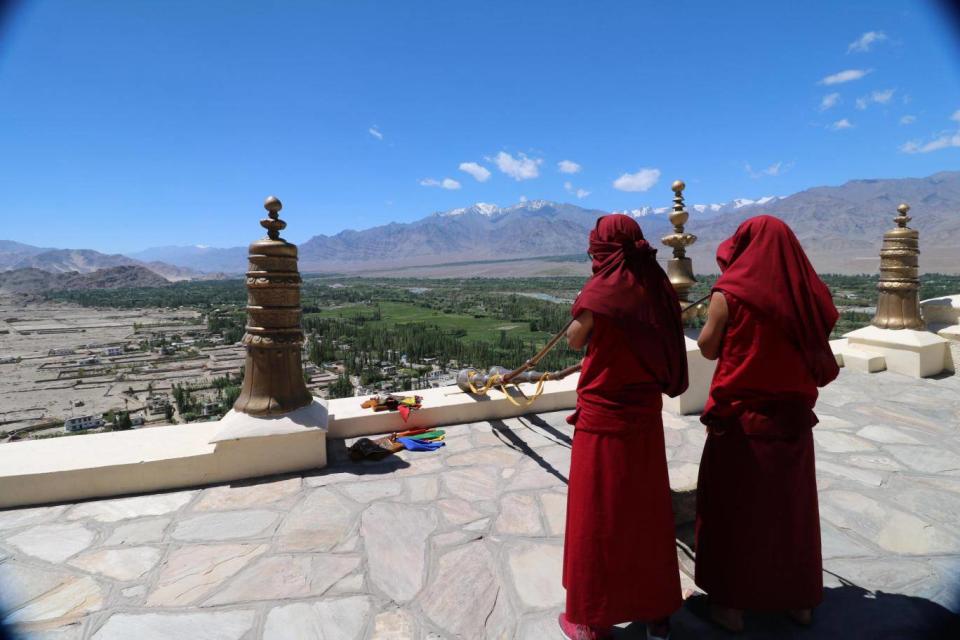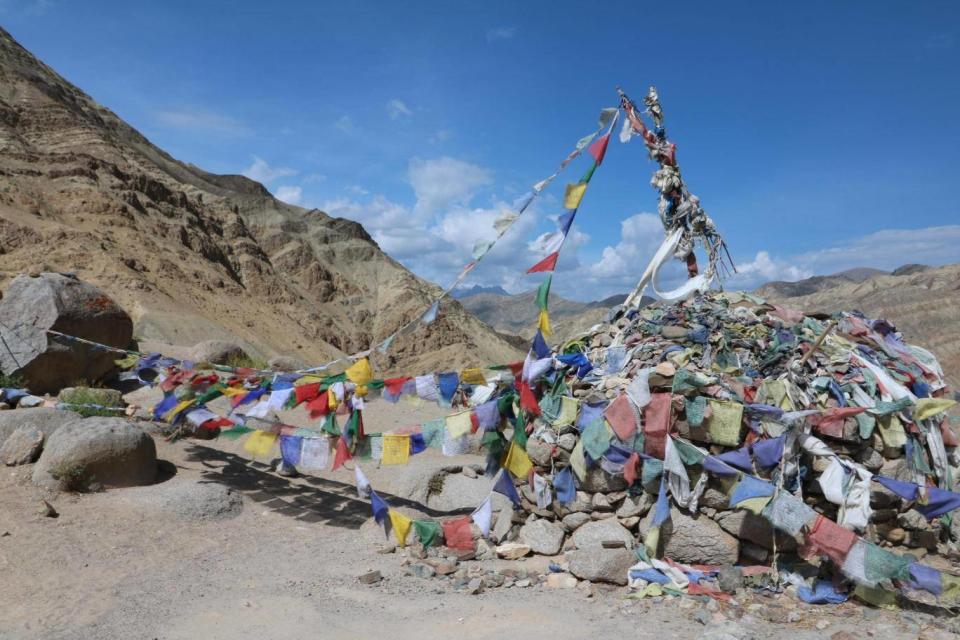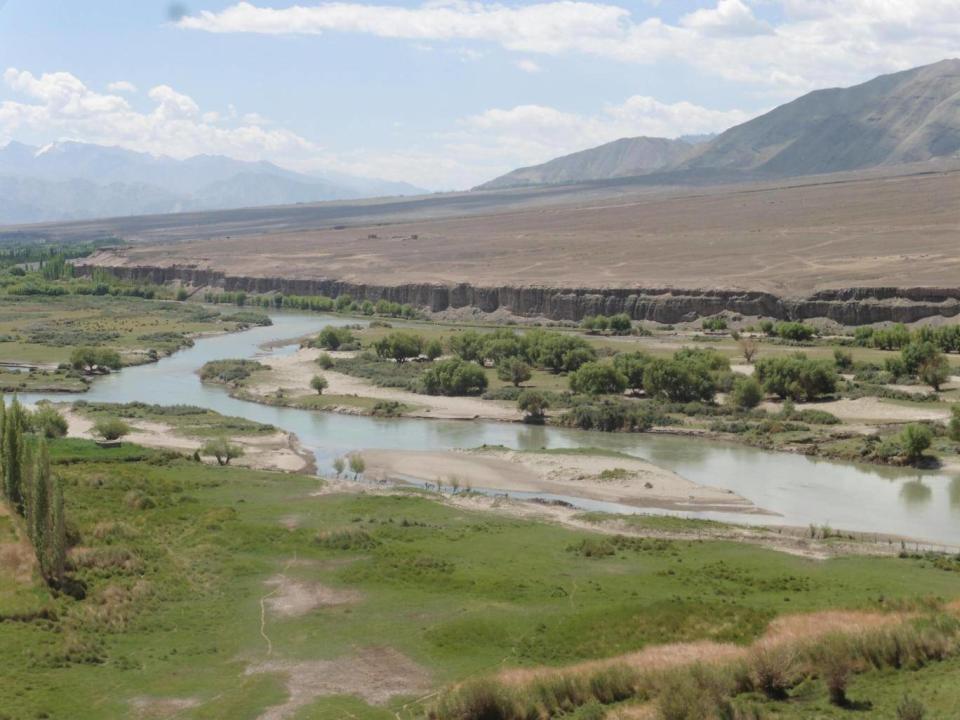Ladakh: a former backpacker revisits the stunning Himalayan region 20 years later

My journey into Ladakh took two days on a decrepit green-and-chrome bus that honked and gasped its way over death-defying passes. I arrived in this land of scorched desert and brilliant-white monasteries – locked high in the Himalaya between Tibet, Pakistan and Kashmir – too knackered to know where I was.
That was more than two decades ago, in the days when the only travellers in Ladakh were backpackers. This time it was an hour-long hop from monsoon-soaked Delhi, flying over freshly minted peaks and glaciers before the clouds petered out and the mountains turned brown and dusty.
Everything about this far-north region of India is extreme. The heart-pounding altitude; the startlingly intense light; the world’s highest roads; the zeal for Tibetan-style Buddhism. And the fact that there is now a smattering of heritage hotels and ultra-luxury camps that can set you back a crazy £250 a night.
Is there a middle way between backpacker basic and bonkers? To find out, I forged a 12-day itinerary with travel company Exodus. I would glory in the cultural and scenic highlights, staying mostly at mid-range hotels and guesthouses. These, I was to find, are now largely the preserve of Ladakh’s new tourists – Indians from all over the subcontinent.
From Ladakh’s largest town, Leh, my erudite and fun-loving Ladakhi guide Norbu took me first up the wide Indus valley to Thikse gompa. The multi-storey monastery stands commandingly on a crag like a smaller version of Lhasa’s Potala palace. From a rooftop fluttering with prayer flags, I gazed over the valley to swaying fields of barley irrigated from the milky-blue river.
A trickle of maroon-cloaked monks streamed out of the shrine room where they had been murmuring mantras before Buddha statues lit by flickering butter candles. From the roof, a pair of monks blew droning notes on giant brass horns, sending further incantations into the ether.
Next I stayed at Nimmu, an oasis village where life relies on diverting torrents fed by snowmelt. Rivulets burbled through terraced plots, green as croquet lawns and stark against bare rock and scree all around. We weaved through apricot orchards; patches of grazing pasture for tethered zhos (the ubiquitous yak and cow cross-breeds); and barley fields lined with flaming yellow poplars. Norbu explained how an all-powerful charpun (water keeper) regulates the flow along an intricate web of channels and sluices, ensuring that every farmer gets a share.
Downstream from Leh the muddy Zanskar river cascades into the crystalline Indus at the mouth of a ravine flanked by soaring cliffs. We snaked up a road blasted and tunnelled out of mineral-rich rock faces veined with green and mauve. At Chilling village, perched above some foaming rapids, we watched a metalsmith smelting these ores on a furnace blown by sheepskin bellows.

Next to the core of the trip, a three-day trek in the Sham valley starting at Likir, whose whitewash gompa spills down a mountainside like builders rubble. We wove a route on ancient yak trails made sacred by white stone stupas holding holy relics. We passed creaking prayer wheels; pebble walls carved with the Om mani padme hum mantra; and high passes adorned with ‘wind horse’ prayer banners flapping invocations to Padmasambhava, the 8th-century guru who brought the ‘middle way’ of the Buddha to Ladakh.
The scene changed at every turn. We climbed through otherworldly strata of plum and lilac-coloured rock folded together like cake mix, then plunged to a canyon pockmarked with bizarre natural sculptures that reminded me of Arizona. Norbu pointed out rocks patterned in minute organic detail: marine fossils at 4,000 metres, formed in the depths of the ocean and marking the scar of impact that formed the Himalaya.

At one point I spied, high above, the tiny hermitage where monks meditate in isolation for up to three years. Amazingly, electricity lines have been strung on poplar pylons all the way up. Why, I wondered aloud? “So the monks can become enlightened,” laughed Norbu. Good one.
In Hemis Shukpachan we watched villagers winnowing barley on a courtyard of walls splashed with drying zho dung (useful winter fuel). Our homestay was a flat-roofed mud-brick house with carved doors and windows. Dolma, the smiling hostess, has a few basic rooms with shared bathrooms, in which she welcomes trekkers during the short summer season.

“We work like zhos for half the year and sleep like bears for the rest,” said Dolma, doling out bowls of delicious dal and tsampa (roasted barley flour). I also seem to remember a teacup or two filled with chang – cloudy homebrewed beer which looked innocent enough but had the kick of an aggrieved yak.
The trek ended next day with a sumptuous Indian dinner on the Namra Hotel terrace at Timishgan. Sitting under a magnified half moon hung like a wedge of glowing melon, I decided that I had found a middle way – l think that Padmasambhava would approve.
Travel essentials
Exodus offers both escorted and tailor-made trips to Ladakh. A 12-night bespoke itinerary including flights from the UK, accommodation, dinners, 4x4 car with driver and guide costs in the region of £1,900 per person based on two sharing.


